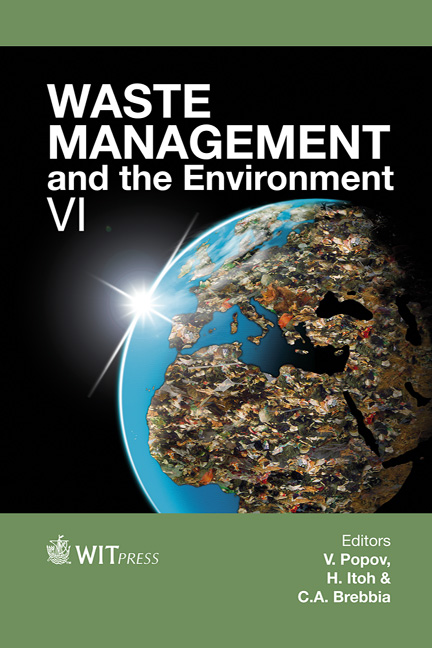Food Waste To Energy To Food
Price
Free (open access)
Transaction
Volume
163
Pages
10
Page Range
135 - 144
Published
2012
Size
328 kb
Paper DOI
10.2495/WM120131
Copyright
WIT Press
Author(s)
S. R. Raftery & R. C. Miner
Abstract
Food waste represents soil degradation, lost energy and water resources and a burden to our landfills and wastewater treatment systems. In the United States, approximately 50 percent of all food grown is wasted in large part, due to distance to markets, on average 1500-2000 miles/2414-3218 km, and the cultural norms of being a throwaway society. This food waste takes up 19 percent of our landfills, and contributes directly to our dependencies on fossil fuels (annually 19 percent of fossil fuels are used for agriculture) and depletion of nonrenewable fresh water sources. Add to this the ‘flaring’ of methane gases at most landfills, along with the CO² emissions, food waste adds to the greenhouse gas issues. What is remarkable is how this waste remains invisible to most of the American population. The paper provides an overview to the food waste in the United States, and how there needs to have a paradigm shift to consider food waste as an energy source to grow food. Keywords: food waste, food miles, consumer waste, landfills, anaerobic digesters, natural resource depletion, fresh water resources and food production. 1 Introduction No one really knows how much food becomes waste in the global food system. From production, to processing, to retail sales, to preparation, cooking and serving, each step in the food system has significant levels of waste. It has been estimated that \“half the world’s food is lost, wasted, or discarded along the chain from the farm to shop to consumer to dump” [1]. While there are those who are working diligently to divert food waste from landfills, such as the European Union (EU) standard to reduce landfill tonnage, greenhouse gas emissions, and renewable energy creation [2], other developed nations such as the United States continue to give only limited attention to the issue of food waste.
Keywords
food waste, food miles, consumer waste, landfills, anaerobic digesters, natural resource depletion, fresh water resources and food production.





